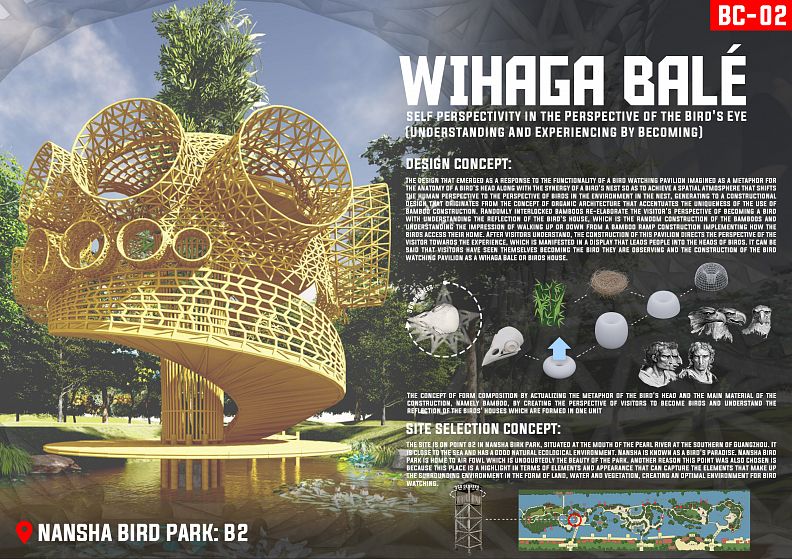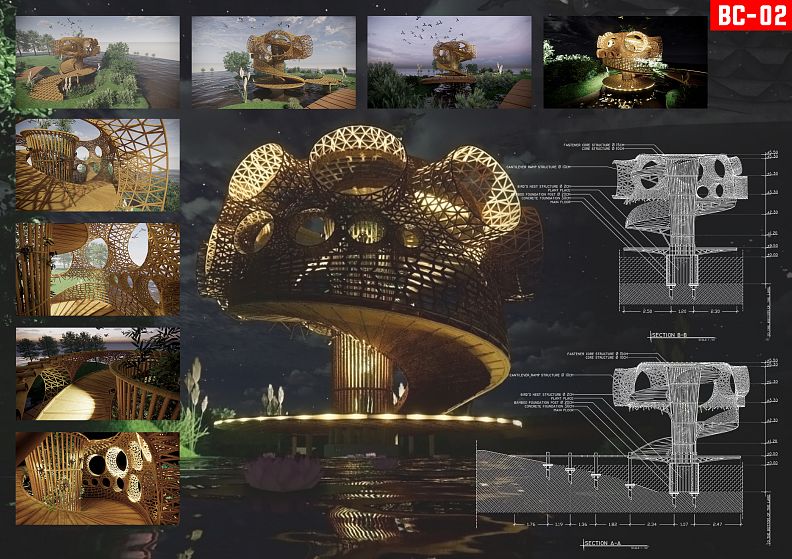WIHAGA BALE

Project idea
The concept of form composition by actualizing the metaphor of the bird's head and the main material of the construction, namely bamboo, by creating the perspective of visitors to become birds and understand the reflection of the birds' houses which are formed in one unit
Project description
The design that emerged as a response to the functionality of a bird watching pavilion imagined as a metaphor for the anatomy of a bird's head along with the synergy of a bird's nest so as to achieve a spatial atmosphere that shifts the human perspective to the perspective of birds in the environment in the nest, generating to a constructional design that originates from the concept of organic architecture that accentuates the uniqueness of the use of bamboo construction. Randomly interlocked bamboos re-elaborate the visitor's perspective of becoming a bird with understanding the reflection of the bird's house, which is the random construction of the bamboos and understanding the impression of walking up or down from a bamboo ramp construction implementing how the birds access their home. After visitors understand, the construction of this pavilion directs the perspective of the visitor towards the experience, which is manifested in a display that leads people into the heads of birds. It can be said that visitors have seen themselves becoming the bird they are observing and the construction of the bird watching pavilion as a WIHAGA BALE or birds house.
Technical information
The site is on point b2 in Nansha Birk Park, situated at the mouth of the Pearl River at the southern of Guangzhou. It is close to the sea and has a good natural ecological environment. Nansha is known as a bird's paradise. Nansha Bird Park is home to air fowl which is undoubtedly the beauty of the park. another reason this point was also chosen is because this place is a highlight in terms of elements and appearance that can capture the elements that make up the surrounding environment in the form of land, water and vegetation, creating an optimal environment for bird watching.




